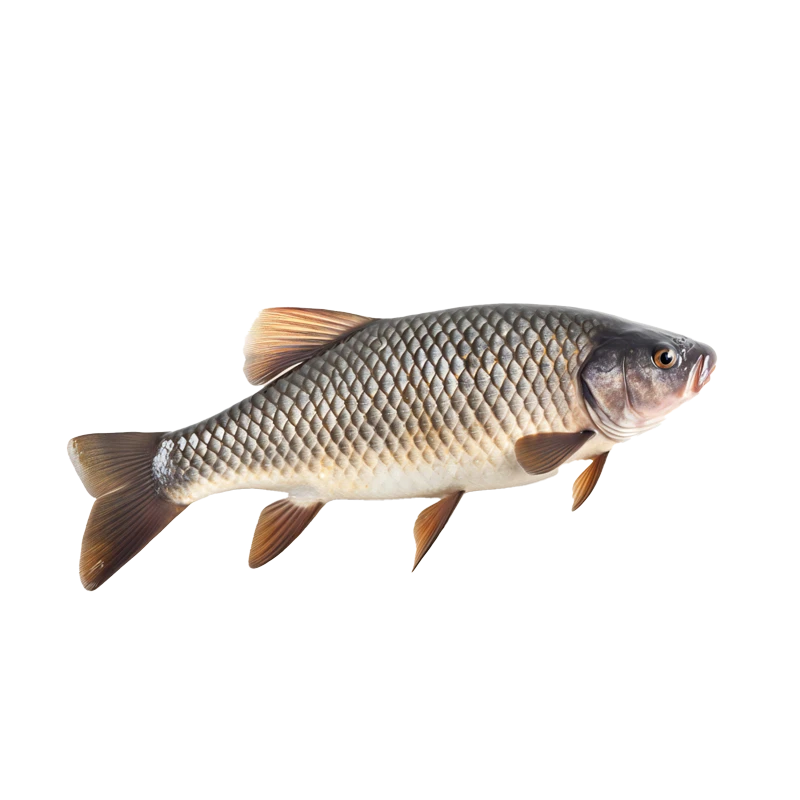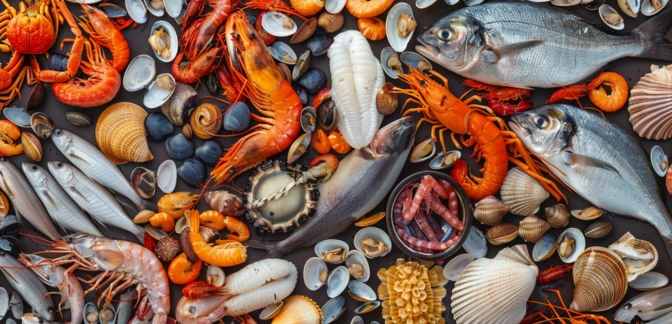Carp — Nutrients, Health Benefits, And Shopping Tips

Written by Listonic Team
Last update on September 4, 2024
Nutrients
Nutrition facts
Amount per 100 g
Calories
🔥 127 kcal
| Nutrition per: 100 g | Value | % Daily Value* |
|---|---|---|
| Carbs | 0 g | - |
| Fiber | 0 g | - |
| Sugars | 0 g | - |
| Glycemic Index | 0 | - |
| Protein | 18 g | 36% |
| Sodium | 54 mg | 2.35% |
| Total Fat | 6 g | 7.69% |
*The % of Daily Value (DV) tells you how much a nutrient in a serving of food contributes to a daily diet. 2,000 calories a day is used for general nutrition advice.
18 g
🧀 Good Protein Content
Key takeaways
Health benefits
- Rich in protein, which is essential for muscle growth, repair, and overall body function.
- Contains healthy fats, particularly omega-3 fatty acids, which support heart health, reduce inflammation, and improve brain function.
- Provides essential vitamins and minerals such as Vitamin B12, selenium, and phosphorus, which support overall health and well-being.
- Supports heart health due to its omega-3 fatty acid content, which can help lower cholesterol levels and reduce the risk of heart disease.
- Low in calories and high in nutrients, making it a healthy addition to a balanced diet.
Health risks
- High mercury content which can pose health risks, particularly if consumed frequently, leading to mercury accumulation in the body.
- Risk of contamination with pollutants or toxins, especially if the fish is sourced from polluted waters, which can affect long-term health.
- Potential for allergic reactions particularly in individuals with fish allergies, causing symptoms like itching, swelling, or difficulty breathing.
- High fat content in some types of carp, which can contribute to increased cholesterol levels and heart disease risk if consumed in large quantities.
How to choose carp
Fresh carp should have clear, bright eyes and firm flesh that springs back when touched. The gills should be a healthy red color, indicating the fish is fresh.
Avoid carp with a slimy surface or an ammonia-like smell, as these are clear indicators the fish is past its prime. Good quality carp should not have any dark spots on its skin or bruises.

How to store carp
Fresh carp should be stored in the refrigerator and used within a couple of days. Keep it in a sealed container or wrapped tightly to maintain freshness. Freezing is an option for longer storage, up to three months.
Leaving carp at room temperature can quickly lead to spoilage. Ensure it is kept cold at all times. Do not refreeze once thawed, as this can affect texture and taste. Always use clean utensils and surfaces to prevent contamination.
✅ Extra Tip
How long does it last?
Carp can last for 1-2 days in the refrigerator when stored in an airtight container. For longer storage, it can be frozen and kept for up to 3-6 months. Ensure it is wrapped tightly to prevent freezer burn.
What to do with leftovers?
Leftover carp can be used in a variety of dishes. Flake the cooked fish and add it to salads for a protein boost, or mix it into a pasta dish with a light sauce. Carp is also great in fish cakes, where it can be combined with breadcrumbs, eggs, and seasonings, then fried until golden.
Use carp in a stir-fry with vegetables and rice, or add it to a fish stew with a tomato or coconut-based broth. If you have a lot of carp, consider making a batch of fish tacos, topped with slaw and a tangy sauce. Carp can also be used as a filling for sandwiches or wraps with fresh greens and a squeeze of lemon. For a unique twist, try using flaked carp in a quiche or frittata for a savory breakfast or brunch.
👨⚕️️ Medical disclaimer
Discover products from other categories
Listonic Team
Fact-checked
Our editorial team checked this article to make sure it was accurate at the time of publishing it.
Get the top-rated shopping list app on your phone!







